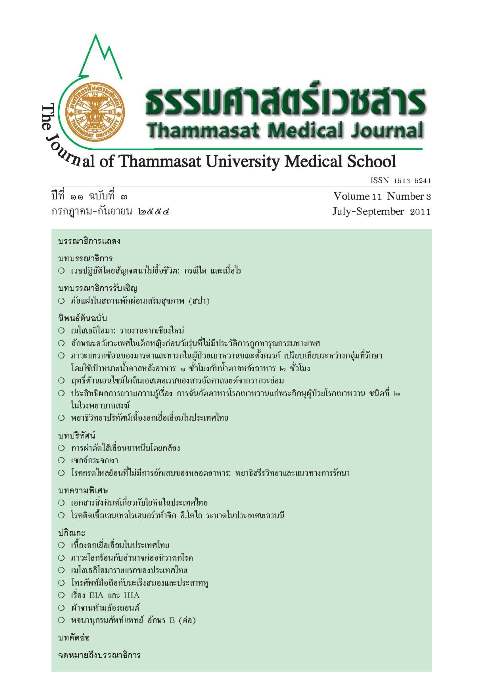Update and current technologies in cervical cancer screening
Keywords:
มะเร็งคอมดลูก, การตรวจคัดกรองมะเร็งคอมดลูก, การติดเชื้อเอชพีวี, Cervical cancer, Cervical cancer screening, Human papillomavirus infectionAbstract
Cervical cancer remains the leading cause of deaths in the developing countries. New cases of cervical cancer occur worldwide each year 493,000 women develop cervical cancer, and in around 230,000 of these cases expired. Nearly 75% of those deaths occur in developing countries where cervical cancer screening programs are either unavailable or ineffective. In Thailand, cervical cancer is the second most common cancer of woman. There were about 6000-7000 incident cases of cervical cancer, 40-50% deaths and the government have to expand proper treatment of disease and its consequences. For the past 40 years, cervical cancer screening program covers only 20-25% of population, it did not establish any satisfactory impact upon public health or trend to decrease an incidence of cervical cancer. The trend in incidence of cervical cancer from 1990-2000 was steady but annually increasing in incidence was estimated from 6,243 to 8,000 in 2002-2008. Human papillomavirus (HPV) infection, the primary cause of cervical cancer, is the most common sexually transmitted infection. Approximately 70% of cervical cancers are caused by HPV types 16 or 18. To encourage proper cervical cancer screening in high risk population with newly technology simultaneously with promote HPV vaccination to girls before they become sexually active may reduce incidence of cervical cancer. The vaccine is estimated to reduce cancer morbidity and mortality by more than 60%.
Key words: Cervical cancer, Cervical cancer screening, Human papillomavirus infection


